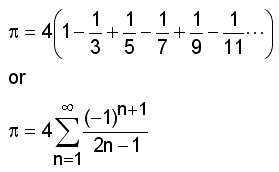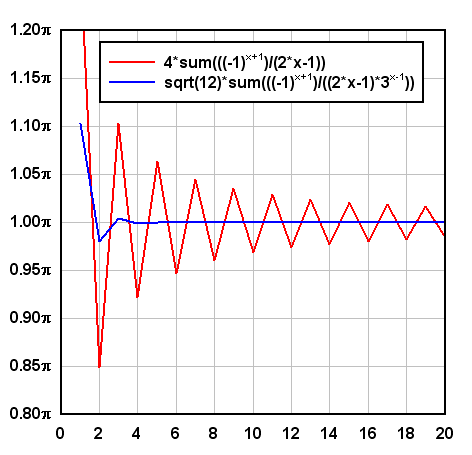Adds the result of the argument to the previous result. This function is useful for evaluating Taylor series.
The SUM function differs from all other functions in 2 respects:
You are limited to 10 SUM functions in any equation (or pair of equations in the case of X=f(T),Y=g(T)).
The Prevent divide by zero errors feature of the Y=f(X) command and similar commands must be ignored when SUM is used in an equation. Division by 0 or other math error will result in an error message rather than incrementing X by a small value and re-evaluating.
Example
A well-known (though very slow to converge) method for calculating π is:

which can be expressed in DPlot as:
4*sum(((-1)^(x+1))/(2*x-1))
The mathematician and astronomer Madhava of Sangamagrama found a series that converges much faster than the above:

which may be expressed in DPlot as
sqrt(12)*sum(((-1)^(x+1))/((2*x-1)*3^(x-1)))
The first 20 terms of both series result in:

____________________________
See also:
Page url:
https://www.dplot.com/help/index.htm?sum_function.htm